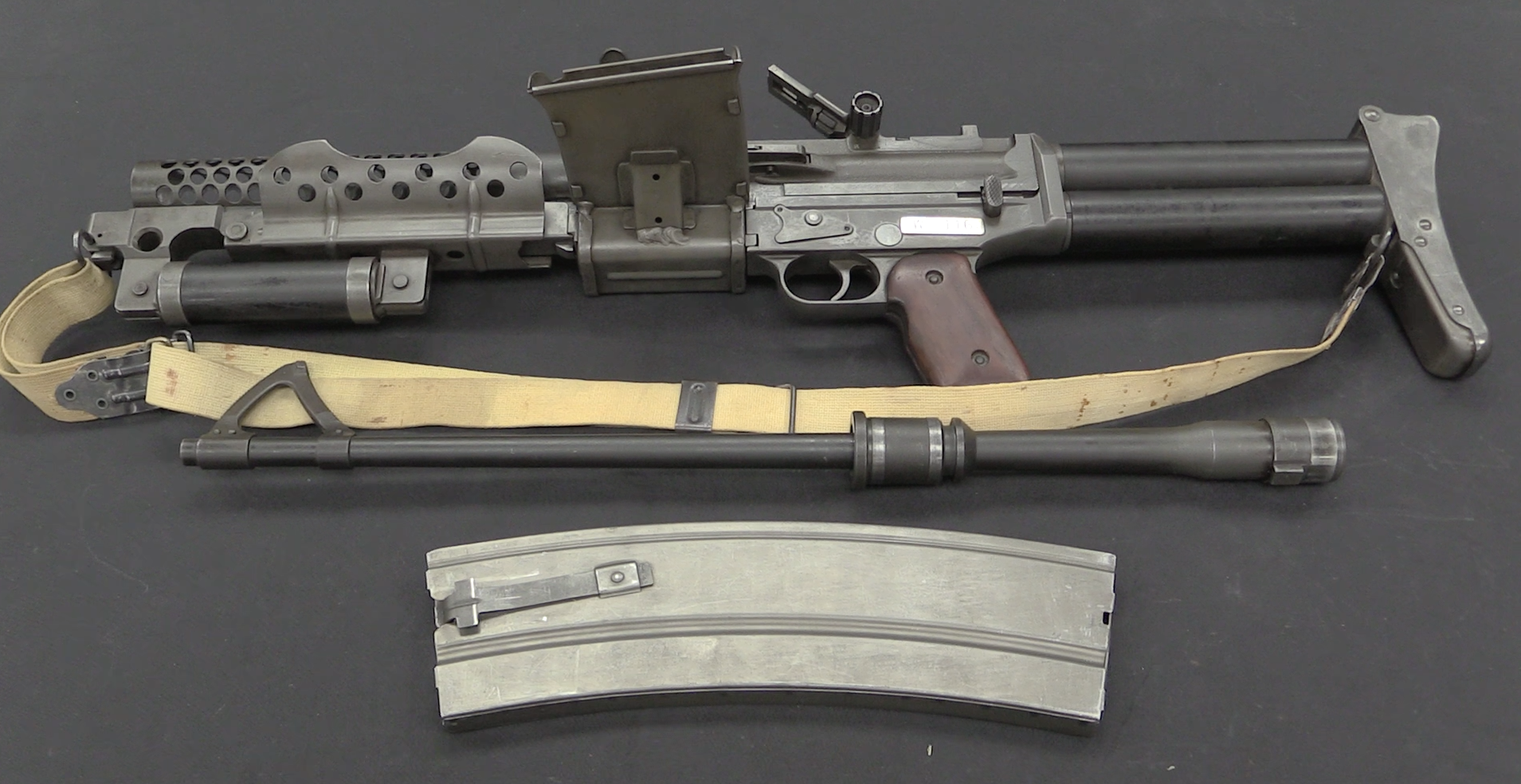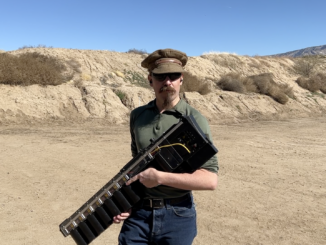Designed by Christian Sharps (or Sharps rifle fame), the Sharps & Hankins carbine was a light and handy rimfire carbine intended for military use. It was a single-shot weapon with an unusual action to lever the barrel forward off the frame, and several interesting technical feature. Most significantly, it used a floating firing pin in the frame, instead of one directly connected to the hammer – a common practice today but novel in the 1850s and 60s.
This example is one of the carbines purchased by the US Navy, which included a distinctive leather sheath on the barrel. This was to protect against salt spray, although these days they are more of a liability for trapping moisture against the barrels, since few owners today expose the guns to ocean spray.




Leather boiled in beeswax – aka Cuir Bouilli – was one type of waterproof leather. I can’t tell from the video if that specific treatment was what they used.
Failing some sort of bluing, they could have simply PAINTED the barrels for rust prevention. The practice was quite common to protect armor in the middle ages. Aside from that, this design is simple and handy, a feature to be admired.
Some related patents for this firearm:
US22753 – January 25, 1859 – this is the original patent for the sliding breech mechanism. In this case applied to a C. Sharps derringer pistol. AFAIK, this under lever four-barrel design was only produced by L. Ghaye of Liege, Belgium for a licensed version of the Sharps derringer.
US32790 – July 9, 1861 – here is the rifle size version of the sliding breech mechanism.
US32899 – July 23, 1861 – the rear sight patent.
US33546 – October 22, 1861 – the safety patent.
I wasn’t able to find any patent for the leather barrel cover, or any patents by William Hankins.
My thoughts on the leather cover for the Navy version:
I don’t think that this was meant to provide any sort of corrosion resistance for the firearm. This was most likely applied for the same reason you see leather covers on the forward barrel of a telescope or spy-glass, to give you a secure grip in wet conditions. Metal and wood become very slick when soaked by sea water, providing a leather cover, while making corrosion a major problem in the long term, help to prevent dropping things into the ocean in the short term.
The original Navy purchase orders specified that the leather cover was for protection against moisture. Note that the major users of the Navy issue S&H during the Civil War were riverine forces operating on the nation’s internal waterways, notably the Mississippi. Salt corrosion was not a factor above the Delta, but protection from environmental humidity absolutely was.
It’s interesting to compare the S&H leather “sleeve” to the barrel-enclosing protective tube of the German Model 1888 Commission rifle. It was also intended to protect the barrel from humidity, plus external “bumps and dings”.
It accomplished the latter fairly well, but changes in temperature and humidity tended to cause moisture to condense inside it. Most Commission rifles still in original condition today have evidence of such corrosion on the external surfaces of their barrels and the inside of the tube if they saw much field service.
cheers
eon
eon,
“The original Navy purchase orders specified that the leather cover was for protection against moisture.”
Can you point me at the primary source for that information? I’d love to read their reasoning for that. Anyone who has put up a firearm in a wet leather holster or scabbard knows that this doesn’t give the firearm any protection from moisture whatsoever.
You are correct as my carbine which looks like a later model has leather at the left hand area only. This was as manufactured as there are no other screw holes on the carbine.
I miss the links to Rock Island auctions in this new format.
Neat gun. Thanks, Ian!
I wonder why he just didnt make it break – open.
My favorite civil war carabine and easy and cheaply reproduced in .22lr
You could even use the original barrel diameter and include an intrigal silencer
By the way quie a few european guns used sliding barrels but off hand I can”t remember which ones probably belgian or french